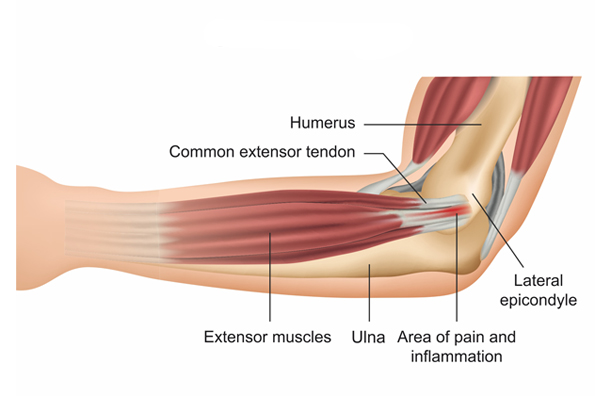Understanding Tennis Elbow: Causes, Symptoms, and Treatment Options
An Overview
Do you experience pain on the outside of your elbow, especially when gripping or extending your wrist? You might have tennis elbow, also known as lateral epicondylitis. This common condition affects the tendons that connect your forearm muscles to the outside of your elbow bone.
What is Tennis Elbow?
Tennis elbow is a degenerative condition, meaning it’s caused by wear and tear over time, not inflammation. It happens when the tendons in your forearm are used repeatedly, causing tiny tears that don’t heal properly. While often associated with racket sports, it can affect anyone involved in activities that involve repetitive gripping or wrist movements.
Symptoms
- Pain and tenderness on the outside of your elbow, especially when gripping or extending your wrist.
- Weakness in your grip.
- Pain that worsens with activities like shaking hands, holding a mug, or using tools.
- Stiffness in the elbow, particularly in the morning.
Causes
- Repetitive motions: Activities like painting, plumbing, carpentry, or playing racket sports can put excessive stress on the tendons, leading to micro-tears.
- Age: As we age, our tendons become less flexible and more prone to injury.
- Improper technique: In sports, using incorrect technique can increase stress on the tendons.
Diagnosis
Your doctor will typically diagnose tennis elbow based on your symptoms and a physical examination. They may also order:
- X-rays: To rule out other bone problems.
- Ultrasound: To visualize the tendons and check for inflammation.
- MRI scan: To get a detailed picture of the tendons and surrounding tissues, helpful for complex cases.
Treatment
Most cases of tennis elbow improve with non-surgical treatments, such as:
- Rest: Avoiding activities that aggravate the pain.
- Ice therapy: Applying ice packs to the affected area for 15-20 minutes at a time, several times a day.
- Pain medication: Over-the-counter pain relievers like ibuprofen or acetaminophen can help manage pain and inflammation.
- Physical therapy: Exercises to strengthen the forearm muscles and improve flexibility can help prevent future injury.
- Bracing: Wearing a brace can support the forearm and reduce stress on the tendons.
If these methods don’t provide relief, your doctor might recommend
Most cases of tennis elbow improve with non-surgical treatments, such as:
- Injections: Injections of a powerful anti-inflammatory medication to reduce pain and inflammation. PRP injections are also recommended (see Treatment section)
- Surgery: Surgery is rarely needed but may be considered in severe cases where other treatments fail.
Remember
Early diagnosis and treatment are crucial for a full recovery. If you experience persistent elbow pain, consult your doctor to discuss the best treatment options for you.

